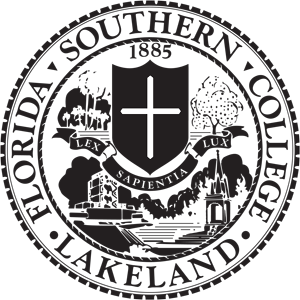
Discover the Art of Curating
Jul 12, 2023

Are you passionate about art and intrigued by the behind-the-scenes work that goes into creating museum exhibitions?
Look no further than ÅÝܽ¶ÌÊÓƵ's unique interdisciplinary course, ARH 3800: The Art of Curating. Offered for the first time this past spring, the class, which meets at The Polk Museum of Art, the provides undergraduate students with an immersive experience in curatorial practices, empowering them to curate an exhibition and explore the world of art from fresh perspectives.
The Scoop
ARH 3800 is not your typical art history course. "It's both a history and practicum course," explains Dr. Alexander Rich, associate professor of art history and museum studies and executive director of the Polk Museum of Art at ÅÝܽ¶ÌÊÓƵ.
"Lots of people throw out the term curating every day — curating one's Instagram feed, curating one's wardrobe. In this course, we talk about what it actually means to be a curator. But, we also give students the opportunity to curate an exhibition right here!"
By learning about the history of curating across cultures and time, students gain insights into how to curate exhibitions that reflect a wide range of viewpoints, fostering inclusivity and greater cultural understanding.
Putting It Into Practice
By combining theoretical knowledge with practical application, the "curators-in-training" work to contribute collectively to a new exhibition for the Museum. The current exhibition, aptly titled features highlights from the Museum's collection of nearly 3,000 works and offers visitors a novel set of lenses and voices through which to experience (or re-experience) familiar and lesser-seen treasures from our collection.

Student Contribution
Instead of a singular voice, the exhibition takes advantage of each student's historical, visual, and personal perspectives. The students, representing a diversity of academic disciplines, including chemistry, microbiology, and business, present viewers with the unique opportunity to understand the works from multiple curatorial vantage points simultaneously.
Three sets of interpretive labels accompany each piece in the exhibition. The historical labels provide insightful background information about the artists and the cultural context of the artworks. The visual labels dissect the unique components of each piece, encouraging visitors to explore the intricate details. Lastly, the personal labels share the emotional and personal connections that student-curators have formed with the artworks, inviting visitors to see the art through different lenses.
Unique Perspectives
The personal labels created by the students reveal the depth of their engagement with the artwork. For example, Cameron Sheean '24, a film major, reflects on his label for "Sharon" and shares how the lithograph resonates with his childhood experiences prompting self-analysis.
"When I look at this work, I was reminded of myself as a child," Sheean wrote. "Being a kid who grew up bullied for being awkward and overweight, I lived a lot of my childhood hiding myself away in the media I enjoyed. Whether it be art, film, music, or television, media taught me how to interact with the world, and as such, my views became synonymous with the media I consumed."
Ashley Dieckmann '26, an art history and museum studies major, reminisces about her father's Coast Guard career and how it relates to the exhibited "Poem Dress of Circulation." These personal narratives add a profound layer of meaning to the exhibition and create a space for visitors to connect on a deeper level.
Inspiration and Creativity
The Art of Curating allows students to explore their passion for art and nurtures their creativity and critical thinking skills. Studio art major Alexandra Martinez '24 was captivated by the vibrancy and unique use of butterfly wings in the artwork titled "Psalm Print, Domine, in Virtute tua." Such encounters with art encourage students to push the boundaries of their creativity, inspiring them to become trailblazers in their own work.
See for Yourself
is on display through September 3, 2023. The student-driven exhibition furthers the understanding of how art influences culture and substantiates the relevance of museums in an enlightened society.
The is open Tuesday through Saturday from 10 a.m. to 4 p.m. and Sunday from 1 p.m. to 5 p.m. Admission is always free.
FSC students interested in registering for this course should contact the Department of Art History and Museum Studies at 680.688.7743 for more information.
 Photos: Lesley Dill, “Poem Dress of Circulation,” 1994, 3-color lithograph assemblage (above); Gregory Mills and The Polk Museum of Art (all others)
Photos: Lesley Dill, “Poem Dress of Circulation,” 1994, 3-color lithograph assemblage (above); Gregory Mills and The Polk Museum of Art (all others)#GetToKnowFSC #CoolClass